Story Ideas - 2014
Story Ideas
Pedestrian Safety: Know That You Are Safe

Walking is good for your health, and it's good for the environment too. But before you head out on foot for a stroll, power walk, or errand, there are important safety tips to remember.
What's the problem?
Pedestrians—people who travel by foot, wheelchair, stroller, or similar means—are among the most vulnerable users of the road.
In the next 24 hours, on average, more than 460 people will be treated in an emergency department for traffic-related pedestrian injuries. In the next 2 hours, on average, one pedestrian will die from injuries in a traffic crash.
More than 4,200 pedestrians were killed in traffic deaths in 2010, and another 70,000 were injured. With numbers like these, it's critical that you understand the risks and learn how to stay safe.
Who's at risk?
Pedestrians of all ages are at risk of injury or death from traffic crashes, but some people are at higher risk.
- Male pedestrians are more likely to die or be injured in a motor vehicle crash than females.
- Teen and young adult (ages 15-29 years) pedestrians are more likely to be treated in emergency departments for crash-related injuries compared to any other age group.
- The rate of pedestrian death generally increases with age.
- In 2010, 33 percent of all pedestrians killed in traffic crashes were legally drunk, with a blood alcohol concentration of greater than or equal to 0.08 grams per deciliter.
As pedestrians, children are at even greater risk of injury or death from traffic crashes due to their small size, inability to judge distances and speeds, and lack of experience with traffic rules.
- Nearly one in four traffic deaths among children ages 14 and under are pedestrian deaths.
Take Steps for Safety
Whenever you're walking, keep these tips in mind:
- Cross the street at a designated crosswalk.
- Be careful at intersections where drivers may fail to yield the right-of-way to pedestrians while turning onto another street.
- Increase your visibility at night by carrying a flashlight and wearing retro-reflective clothing.
- It's safest to walk on a sidewalk, but if you must walk in the street, walk facing traffic.
Take steps to be safe when walking on roadways. This includes exercising caution at intersections and crosswalks and increasing your visibility at night by wearing retro-reflective clothing and carrying flashlights.
For more Information, please visit:
Healthy New Year

Many popular New Year's resolutions focus on how to improve our health. That is good news, considering that being healthy provides us protection against disease and injury, as well as strength and energy to help us have a good quality of life.
Whatever your situation, see your health care provider and find out how you can live a safer and healthier life. Here are a few general tips for a safe and healthy life:
- Find health resources to help you achieve your New Year's goals.
- Protect yourself from injury or disease by wearing a helmet, sunscreen, or insect repellent when necessary.
- Make an appointment for a check-up, vaccination, or screening. Know where to go for care if you do not have health insurance.
- Wash your hands often with soap and water. If soap and water are not available, use an alcohol-based hand sanitizer.
- Learn health tips that take 5 minutes or less.
Below are more tips for creating a healthy you and healthy family in the New Year.
Healthy You
- Make healthy food choices. Grab a healthy snack such as fruit, nuts, or low-fat cheese.
- Be active. Try simple things such as taking the stairs instead of the elevator. Be active for at least 2½ hours a week.
- Find out more about the benefits of regular physical activity. Sometimes getting started is the hardest part. Learn what counts as aerobic exercise
- Be smoke-free. If you are ready to quit, call 1-800-QUIT-NOW for free counseling. Need inspiration? Check out Tips from Former Smokers.
- Get enough sleep. Remember that sleep is a necessity, not a luxury.
Healthy Family
- Learn how to be healthy before, during, and after pregnancy.
- Reduce auto-related injuries by using seat belts, child safety seats, and booster seats that are appropriate for your child's age and weight.
- Learn positive parenting tips to keep teens safe on the road.
- Develop and enforce rules about acceptable and safe behaviors using electronic media.
- Lower the risk of foodborne illness as you prepare meals for your family.
- Serve healthy meals and snacks.
- Encourage and support physical activity.
- Gather and share family health history.
- Be a healthy caregiver.
- Encourage family members to get check-ups and screenings. Make sure they know where to go for care if they do not have health insurance.
- Get pets vaccinated and keep pets healthy.
- Add the 5 Minutes or Less for Health widget to your website to get new health tips each week.
Make being healthy your resolution and find ways to get and stay healthy this year.
For more information, please visit:
National Black HIV/AIDS Awareness Day

February 7th is National Black HIV/AIDS Awareness Day, an opportunity to promote HIV prevention, testing, care, and treatment among African Americans in the United States.
African Americans are disproportionately affected by HIV. The Centers for Disease Control and Prevention (CDC) estimates that blacks accounted for nearly half (44 percent) of all new infections in 2010, despite making up only 14 percent of the population. This represents a rate that is eight times higher than whites.
Overall, African American gay and bisexual men, especially young men, are the hardest-hit. In addition, African American women are far more affected by HIV than women of any other race or ethnicity.
Today, we have more opportunities than ever before to reduce the burden of HIV that African American men, women, and young adults bear. Working together with state and local public health agencies, African American communities, and other partners in the public and private sectors, CDC continues to address the HIV epidemic in African American communities.
Related Links:
- CDC: HIV Among African Americans
- CDC: Basic Information about HIV and AIDS
- Act Against AIDS campaign
- Testing Makes Us Stronger campaign
- Take Charge. Take the Test. campaign
- Let’s Stop HIV Together campaign
- AIDS.gov
The health impact of poor air quality: CDC’s focus for asthma awareness month
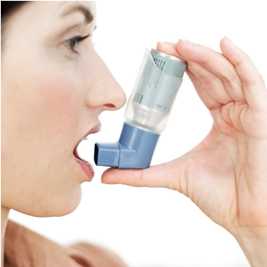
Asthma, a chronic disease that affects the lungs, impacts more than 25 million people in the United States, including 1 in 11 children. It causes 3 in 5 people living with asthma to limit their physical activity or miss days at school and work. Asthma is also expensive, costing the nation $56 billion each year. Throughout May, people with asthma and organizations dedicated to asthma control and education join together to increase awareness about asthma and improve the lives of everyone living with this disease.
The Centers for Disease Control and Prevention (CDC)’s Asthma Awareness Toolkit is a resource featuring a variety of items to help people living with asthma and partner organizations take control of and raise awareness about the disease, including:
- Key action messages
- Videos and audio podcasts
- Sample social media posts for Facebook and Twitter
- A personal asthma action plan builder
CDC’s National Asthma Control Program (NACP) funds 36 state and territorial state asthma programs. People living with asthma are particularly affected by air pollution. Ozone air pollution, more common in the summer months, can trigger asthma attacks, leading to increased medication use, visits to emergency departments, and hospital admissions.
People with asthma and other chronic respiratory conditions can access daily air quality forecasts to plan outdoor activities for times when air pollution is predicted to be low, including air quality conditions for 400 U.S. cities. http://www.enviroflash.info/
Related Links:
Skin Cancer Awareness Month

Skin cancer is the most common type of cancer in the United States, yet most cases are preventable. Most skin cancers are caused, at least in part, by ultraviolet (UV) radiation. The main avoidable risk factor for skin cancer is exposure to UV radiation, from the sun and from indoor tanning devices. Using sun protection when outdoors and avoiding indoor tanning are simple ways to reduce your risk. Although skin cancer is often treatable, it can be disfiguring and costly to treat. Melanoma, a more serious type of skin cancer, is one of the most common types of cancer in adults under the age of 40, and can be deadly. Communities, health professionals, and families can work together to prevent skin cancer.
Make a difference: Spread the word about strategies for preventing skin cancer and encourage communities, organizations, families, and individuals to get involved.
Here are a few ideas for your readers or listeners during Skin Cancer Awareness Month:
- Encourage families to be sun safe while leading healthy, active lives and enjoying the outdoors. The EPA’s UV Index (www.epa.gov/uvindex) can help people choose appropriate sun protection strategies that work. Some tips:
- Wear a hat, sunglasses, and other protective clothing, seek shade, especially during midday hours, and use sunscreen.
- Remember that sunscreen is most effective when used in combination with other methods.
- Keep your skin healthy. Do not sunbathe or indoor tan.
- Provide teachers and administrators with the resources and support they need to teach kids about the importance sun safety and avoiding indoor tanning. The EPA’s SunWise Program has free tools to help children learn more about sun safety: www.epa.gov/sunwise
- Identify youth leaders in your community who can talk to their peers about taking steps to prevent skin cancer by being sun safe, and not sunbathing or indoor tanning.
- Talk to your doctor if you notice changes in your skin such as a new growth, a sore that doesn't heal, a change in an old growth, or a change in a mole.
Related Links:
Have a safe and healthy summer

Warm weather brings more opportunity for water-related activities like swimming, boating and fishing. Make this year's summer break memorable by having fun and helping yourself, your friends, and others stay safe and healthy.
Prevent drowning:
Drowning is responsible for more deaths among children ages one through four than any other cause except birth defects. Two to three children die every day as a result of drowning.
- Everyone should know the basics of swimming (floating, moving through the water). Formal swimming lessons can protect young children from drowning.
- Always supervise children when in or around water. Designate a responsible adult to constantly watch young children.
- Learn cardiopulmonary resuscitation. Your CPR skills could save a loved one’s life.
- Ensure pool safety: Swimming pools are great for family fun and fitness, but are the most common setting for drowning among children ages 1-9.
- Install a four-sided fence around home pools. Use self-closing and self-latching gates that open outward with latches that are out of reach of children.
Ensure boating safety
Recreational boating can be a wonderful way to spend time with family and friends. More than 90 percent of the people who drowned were not wearing a life jacket.
- Keep boating fun by making safety a priority. Enroll in a boating safety course.
- Wear a life jacket every time you and your loved ones are on the water. It can greatly decrease your chances of drowning while boating.
- Do not drink while boating. Alcohol use was the leading contributing factor in fatal boating incidents. Alcohol use affects judgment, vision, balance, and coordination, and is involved in about a third of all recreational boating fatalities.
Related Links:
Parents
- ABCs of Raising Safe and Healthy Kids
English | En Español - Test Your Knowledge about Kids' Health
Kids and Teens
Summer Bliss – Be Healthy and Safe

Add health to your wedding checklist and commit to staying healthy and safe before, during, and after the wedding.
Before you say "I Do," make health a priority. Remember to put yourself on the wedding checklist, with good health and safety habits. While you're planning the parties, wedding, and honeymoon, stay committed to your total health—physical and mental.
Be Healthy
- Being active has its benefits. Get at least 2½ hours of physical activity a week. The health benefits of physical activity include controlling your weight, reducing the risk for certain diseases and conditions, and improving your mental health and mood.
- Prepare and eat healthy foods. Have a heart-healthy diet that includes plenty of fruits and vegetables and foods low in sugar, salt, and saturated fat. Avoid crash diets. Include nutritious foods at the various celebrations.
- Be tobacco free. If you smoke, quit now. It's a perfect gift to for you and your loved ones. Host events in smoke-free venues.
- Sleep tight. Get 7-9 hours of sleep each night. Insufficient sleep is responsible for motor vehicle and machinery-related crashes, causing substantial injury and disability each year. In short, drowsy driving can be as dangerous—and preventable—as driving while intoxicated.
- Get your check-up. Don't put off exams and health screenings. Include them as part of your planning, just like everything else.
- Schedule an appointment to see your health provider, a counselor, or others for help if you are feeling depressed or anxious.
Be Safe
- Know the rules of food safety. Protect yourself, family, and friends by learning about foodborne illness.
- Lower risk for injury. Choose appropriate clothing, footwear, and decorations that do not increase the risk of injury.
-
Travel safely. Wear seat belts while riding in a motor vehicle.
- If you're going abroad for your honeymoon, get travel health information for your location. Know what vaccinations you will need for the trip.
- Whether you're going abroad or staying close to home, pack and use sunscreen, insect repellent, and prevent other common problems from happening during travel. Use appropriate safety gear (such as helmets, life jackets, and knee pads). These steps may lower your risk for illness and injury.
- Stay healthy on a cruise. Cruise ship outbreaks of nausea, vomiting, and diarrhea, primarily caused by norovirus, have been reported. Prevent illness through frequent hand washing with soap and water.
- Check the health scores for cruise ships. Vessel sanitation programs give information on everything from the cleanliness of cutting boards to food inspection reports.
Pay attention to anything interfering with your ability to be safe and healthy or increasing your risk for disease or injury.
Learn more tips to have a safe and healthy wedding!
Related Links:
Protect the Ones You Love: Road Traffic Injuries
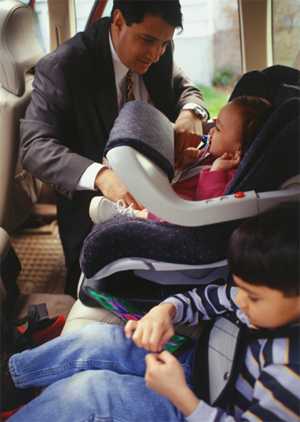
We all want to keep our children safe and secure and help them live to their full potential. Knowing how to prevent leading causes of child injury, like road traffic injuries, is a step toward this goal. Every hour, more than 100 children between ages 0 and 19 are treated in emergency departments for injuries sustained in motor vehicle crashes. More children ages 5 to 19 die from crash-related injuries than from any other type of injury. Thankfully, parents can play a key role in protecting the children they love from road traffic injuries.
One of the best protective measures you can take is buckling children in car seats, booster seats, and seat belts that are appropriate for their age, height, and weight.
Know the Stages:
- Birth up to Age 2 – Rear-facing car seat. For the best possible protection, infants and children should be buckled in a rear-facing car seat, in the back seat, until age 2 or when they reach the upper weight or height limit of their seat.
- Age 2 up to at least Age 5 – Forward-facing car seat. When children outgrow their rear-facing seat they should be buckled in a forward-facing car seat, in the back seat, until at least age 5 or when they reach the upper weight or height limit of their seat.
- Age 5 up until seat belts fit properly – Booster seat. Once children outgrow their forward-facing seat they should be buckled in a belt positioning booster seats until seat belts fit properly. Seat belts fit properly when the lap belt lays across the upper thighs (not the stomach) and the shoulder belt lays across the chest (not the neck). Remember to keep children properly buckled in the back seat for the best possible protection.
- Once Seat Belts Fit Properly – Children no longer need to use a booster seat once seat belts fit them properly. Seat belts fit properly when the lap belt lays across the upper thighs (not the stomach) and the shoulder belt lays across the chest (not the neck). For the best possible protection keep children 12 and under properly buckled in the back seat.
- Back Seat is Safest. All children aged 12 and under should be properly buckled in the back seat. Airbags can kill young children riding in the front seat. Never place a rear-facing car seat in front of an air bag. Buckle children in the middle of the back seat when possible, because it is the safest spot in the vehicle.
Additional Resources
- http://www.cdc.gov/features/passengersafety/
- http://www.cdc.gov/vitalsigns/childpassengersafety/
- Safe Kids In and Around Cars
- Safe Kids: Child Passenger Safety certification program
- Safe Kids Walk This Way: Pedestrian safety program
- Safe Routes to School: Local Efforts
- Safe Routes to School: Program Resources
Depression among women, what you should know?

Many women experience depression including pregnant women, postpartum women, and women who are not pregnant. Depression has symptoms, just like other illnesses, including—
- A low or sad mood.
- Loss of interest in fun activities.
- Changes in eating, sleep, and energy.
- Problems in thinking, concentrating, and making decisions.
- Feelings of worthlessness, shame, or guilt.
- Thoughts that life is not worth living.
When many of these symptoms occur together and last for more than a week or two at a time, this is depression.
The symptoms of postpartum depression are similar to symptoms for depression, but they also include—
- Trouble sleeping when your baby sleeps (more than the lack of sleep new moms usually get).
- Feeling numb or disconnected from your baby.
- Having scary or negative thoughts about the baby, like thinking someone will take your baby away or hurt your baby.
- Worrying that you will hurt the baby.
- Feeling guilty about not being a good mom, or ashamed that you cannot care for your baby.
According to a CDC survey, 8 to 19% of women reported having frequent postpartum depressive symptoms.
You may have heard of postpartum depression (PPD), but many women don’t know that depression can occur during pregnancy or with other events, such as losing a baby or having trouble getting pregnant.
There are effective treatments for depression that may include medication or talking with a trained therapist. The best way to deal with depression is to see a doctor or a counselor. The earlier you seek help, the better you may do.
For more information
- Depression Among Women of Reproductive Age
- Treatments for depression
- Depression and treatment among U.S. pregnant and nonpregnant women of reproductive age, 2005–2009
- Incidence of Maternal and Paternal Depression in Primary Care A Cohort Study Using a Primary Care Database
Five Important Reasons to Vaccinate Your Child
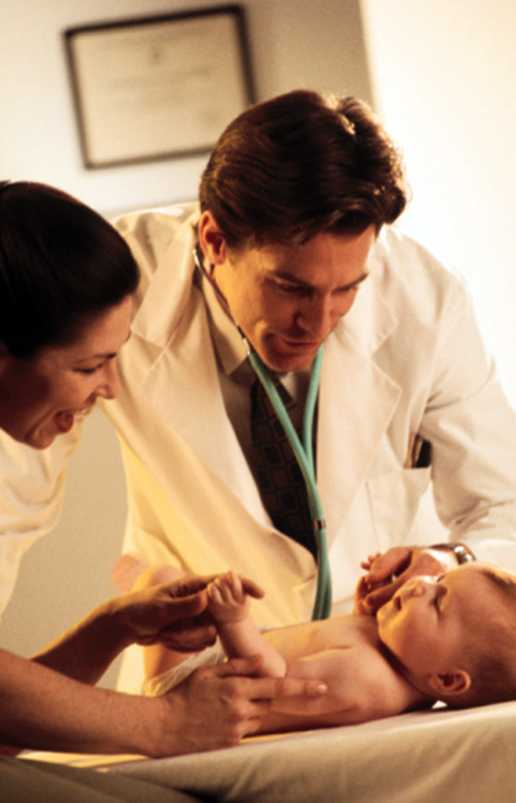
National Immunization Awareness Month is a reminder that we all need vaccines throughout our lives.
You want to do what is best for your children. You know about the importance of car seats, baby gates and other ways to keep them safe. But, did you know that one of the best ways to protect your children is to make sure they have all of their vaccinations?
Immunizations can save your child’s life. Because of advances in medical science, your child can be protected against more diseases than ever before. Some diseases that once injured or killed thousands of children, are no longer common in the U.S. – primarily due to safe and effective vaccines. Polio is one example of the great impact that vaccines have in the United States. Polio was once America’s most-feared disease, causing death and paralysis across the country, but today, thanks to vaccination, there are no reports of polio in the United States.
Vaccination is very safe and effective. Vaccines are only given to children after a long and careful review by scientists, doctors, and health care professionals. Vaccines will involve some discomfort and may cause pain, redness, or tenderness at the site of injection, but this is minimal compared to the pain, discomfort, and trauma of the diseases these vaccines prevent. Serious side effects following vaccination, such as severe allergic reaction, are very rare. The disease-prevention benefits of getting vaccines are much greater than the possible side effects for almost all children.
Immunization protects others you care about. Children in the U.S. still get vaccine-preventable diseases. In fact, we have seen resurgences of measles and whooping cough (pertussis) over the past few years. For example, more than 48,000 cases of whooping cough were reported in the U. S. in 2012. During this time, 20 deaths were reported—the majority of these deaths were in children younger than 3 months of age. Unfortunately, some babies are too young to be completely vaccinated and some people may not be able to receive certain vaccinations due to severe allergies, weakened immune systems from conditions like leukemia, or other reasons. To help keep them safe, it is important that you and your children who are able to get vaccinated are fully immunized. This not only protects your family, but also helps prevent the spread of these diseases to your friends and loved ones.
Immunizations can save your family time and money. A child with a vaccine-preventable disease can be denied attendance at schools or daycare facilities. Some vaccine-preventable diseases can result in prolonged disabilities and can take a financial toll because of lost time at work, medical bills or long-term disability care. In contrast, getting vaccinated against these diseases is a good investment and usually covered by insurance or the Vaccines for Children (VFC) program, which is a federally funded program that provides vaccines at no cost to children from low-income families. To find out more about the VFC program, visit http://www.cdc.gov/vaccines/programs/vfc/ or ask your child’s health care professional.
Immunization protects future generations. Vaccines have reduced and, in some cases, eliminated many diseases that killed or severely disabled people just a few generations ago. For example, smallpox vaccination eradicated that disease worldwide. Your children don’t have to get smallpox shots anymore because the disease no longer exists. By vaccinating children against rubella (German measles), the risk that pregnant women will pass this virus on to their fetus or newborn has been dramatically decreased, and birth defects associated with that virus rarely are seen in the U. S. If we continue vaccinating now, and vaccinating completely, parents in the future may be able to trust that some diseases of today will no longer be around to harm their children in the future.
For more information about the importance of infant immunization, visit http://www.cdc.gov/vaccines.
National Suicide Prevention Week

Suicide is a serious public health problem that can have lasting harmful effects on individuals, families, and communities. While its causes are complex and determined by multiple factors, the goal of suicide prevention is simple: Reduce factors that increase risk and increase factors that promote resilience.
Ideally, prevention addresses all levels of influence: individual, relationship, community, and societal. Effective prevention strategies are needed to promote awareness of suicide and encourage a commitment to social change.
Suicide is a type of self-directed violence. Self-directed violence includes:
-
Suicide
Death caused by self-directed injurious behavior with any intent to die as a result of the behavior. -
Suicide attempt
A non-fatal self-directed potentially injurious behavior with any intent to die as a result of the behavior. A suicide attempt may or may not result in injury. -
Suicidal ideation
Thinking about, considering, or planning for suicide.
Most people are uncomfortable with the topic of suicide. Too often, victims are blamed, and their families and friends are left stigmatized. As a result, people do not communicate openly about suicide. An important public health problem is left shrouded in secrecy.
The good news is that research over the last several decades has uncovered a wealth of information on the causes of suicide and on prevention strategies. Additionally, CDC is working to monitor the problem and develop programs to prevent youth suicide.
For More Information:
-
Division of Violence Prevention
CDC's Division of Violence Prevention is committed to stopping violence, including suicide, before it begins. -
National Strategy for Suicide Prevention (Department of Health and Human Services)
This revised national strategy emphasizes the role every American can play in protecting their friends, family members, and colleagues from suicide. It also provides guidance for schools, businesses, health systems, clinicians and many other sectors that takes into account nearly a decade of research and other advancements in the field since the last strategy was published. -
Strategic Direction for the Prevention of Suicidal Behavior: Promoting Individual, Family, and Community Connectedness to Prevent Suicidal Behavior [PDF 507KB]
This document describes a five-year vision for the CDC’s work to prevent fatal and nonfatal suicidal behavior. Our key strategy is promoting individual, family, and community connectedness. -
State Suicide Prevention Planning: A CDC Research Brief; Atlanta, GA [PDF 4MB]
This document summarizes the results of a CDC research study conducted to describe the key ingredients of successful state-based suicide prevention planning. -
Suicide Among Adults, Aged 35-64 — United States, 1999-2010 [PDF 875KB]
This report shows that, from 1999 to 2010, the suicide rate for middle-aged Americans increased 28%. Findings emphasize the importance of prevention efforts in this age group. -
Preventing Suicide: A Global Initiative
The World Health Organization’s first global report on suicide serves as a building block for developing and implementing comprehensive suicide prevention strategies worldwide. -
Reporting on Suicide (American Foundation for Suicide Prevention)
A group of international suicide prevention organizations, public health organizations, and internet safety experts have collaborated with working journalists, news organizations, and schools of journalism to develop a set of recommendations for reporting on suicide.
October Is Protecting Your Hearing Month
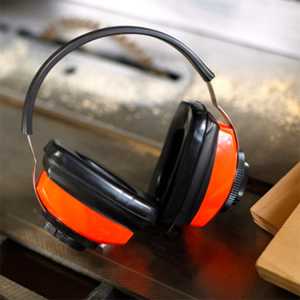
Occupational hearing loss is one of the most common work-related illnesses in the United States. Approximately 22 million U.S. workers are exposed to hazardous noise levels at work, and an additional 9 million are at risk for hearing loss from other agents such as solvents and metals. The National Institute for Occupational Safety and Health (NIOSH) and the occupational safety and health community named hearing loss one of the 21 priority areas for research in the next century.
An estimated $242 million is spent annually on worker’s compensation for hearing loss disability. Ten million people in the U.S. have a noise-related hearing loss. While any worker can be at risk for noise-induced hearing loss in the workplace, workers in many industries have higher exposures to dangerous levels of noise. Industries with high numbers of exposed workers include: agriculture; mining; construction; manufacturing and utilities; transportation; and military.
Noise-induced hearing loss is 100 percent preventable but once acquired, hearing loss is permanent and irreversible. Therefore, prevention measures must be taken by employers and workers to ensure the protection of workers' hearing.
NIOSH recommends removing hazardous noise from the workplace whenever possible; it is the most effective way to prevent noise-induced hearing loss. Hearing protectors such as ear plugs and ear muffs should be used when it is not feasible to otherwise reduce noise to a safe level.
NIOSH also recommends hearing loss prevention programs for all workplaces with hazardous levels of noise. These programs should include noise assessments, safety controls, audiometric monitoring of workers' hearing, appropriate use of hearing protectors, worker education, record keeping, and program evaluation.
Related Links:
How Air Pollution Can Effect You

Transportation-related pollutants are one of the largest contributors to unhealthy air quality. Exposure to traffic emissions has been linked to many adverse health effects including: exacerbation of asthma symptoms, diminished lung function, adverse birth outcomes, and childhood cancer.
- Common transportation-related air pollutants include carbon monoxide, nitrogen dioxide, and particulate matter.
- Particulate matter and ozone are known respiratory irritants that can aggravate asthma either by themselves or when combined with other environmental factors.
- Motor vehicles contribute to more than 50% of air pollution in urban areas.
- Reducing automobile trips by increasing mass transit use, carpooling, walking, and bicycling can help reduce air pollution, especially in urban areas.
- During the 1996 Summer Olympics Games in Atlanta, when peak morning traffic decreased 23 percent and peak ozone levels decreased 28%, emergency visits for asthma events in children decreased 42 percent.
For more information on respiratory health & air pollution, refer to the following resources:
Be Safe and Enjoy Winter Outdoor Activities
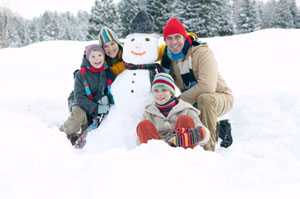
Many people spend time outdoors in the winter working, traveling, or enjoying winter sports. Outdoor activities can expose you to several safety hazards, but you can take these steps to prepare for them:
- Wear appropriate outdoor clothing: layers of light, warm clothing; mittens; hats; scarves; and waterproof boots.
- Sprinkle cat litter or sand on icy patches.
- Learn safety precautions to follow when outdoors.
- Be aware of the wind chill factor.
- Work slowly when doing outside chores.
- Take a buddy and an emergency kit when you are participating in outdoor recreation.
- Carry a cell phone.
- Protect your family from carbon monoxide.
- Keep grills, camp stoves, and generators out of the house, basement and garage.
- Locate generators at least 20 feet from the house.
- Leave your home immediately if the CO detector sounds, and call 911.
No one can stop the onset of winter. However, if you follow these suggestions, you will be ready for it when it comes.
For more information on protecting yourself outdoors in winter:
http://www.cdc.gov/Features/WinterWeather/index.html
Winter Safety Steps for Your Home
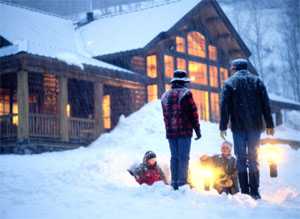
Many people prefer to remain indoors in the winter, but staying inside is no guarantee of safety. Take these steps to stay healthy and keep your home safe and warm during the winter months.
- Winterize your home.
- Install weather stripping, insulation, and storm windows.
- Insulate water lines that run along exterior walls.
- Clean out gutters and repair roof leaks.
- Check your heating systems.
- Have your heating system serviced professionally to make sure that it is clean, working properly and ventilated to the outside.
- Inspect and clean fireplaces and chimneys.
- Install a smoke detector. Test batteries monthly.
- Have a safe alternate heating source and alternate fuels available.
- Prevent carbon monoxide (CO) emergencies.
- Install a CO detector to alert you of the presence of the deadly, odorless, colorless gas. Check batteries regularly.
- Learn symptoms of CO poisoning: headaches, nausea, and disorientation.
- Prepare for winter weather emergencies if you get stuck in your home.
Be prepared for weather-related emergencies, including power outages.
- Stock food that needs no cooking or refrigeration and water stored in clean containers. Ensure that your cell phone is fully charged.
- When planning travel, be aware of current and forecast weather conditions.
- Keep an up-to-date emergency kit, including:
- Battery-operated devices, such as a flashlight, a National Oceanic and Atmospheric Administration (NOAA) Weather Radio, and lamps;
- extra batteries;
- first-aid kit and extra medicine;
- baby items; and
- cat litter or sand for icy walkways.
For more information on Winter Weather Safety:
http://www.cdc.gov/Features/WinterWeather/index.html
For more information on carbon monoxide poisoning:
http://www.cdc.gov/co/guidelines.htm
- Page last reviewed: October 10, 2014
- Page last updated: October 10, 2014
- Content source:



 ShareCompartir
ShareCompartir